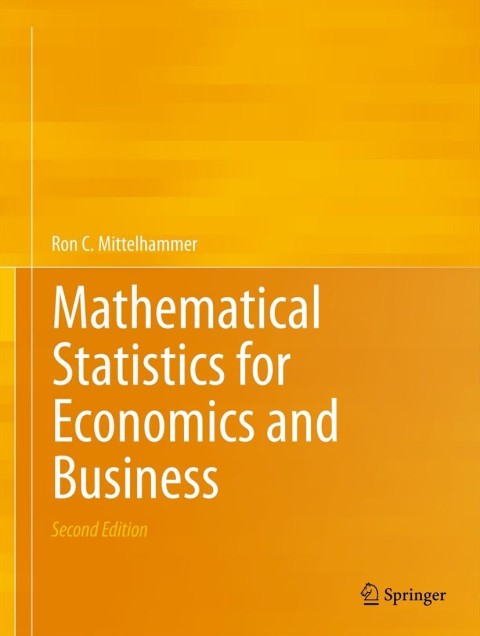The following statistical model is postulated for representing the relationship between real aggregate disposable income and real
Question:
The following statistical model is postulated for representing the relationship between real aggregate disposable income and real aggregate expenditure on nondurable goods:
\(Y_{i}=\exp \left(\beta_{1}+\beta_{2} X_{i}+\varepsilon_{i}ight)\) where
\(y_{i}=\) real aggregate expenditure on nondurables in period \(i\) measured in billions of dollar;
\(x_{i}=\) real aggregate disposable income in period \(i\), measured in billions of dollars; and \(\varepsilon_{i}^{\prime}\) s are iid, with \(\varepsilon_{i}+a b \sim \frac{1}{b^{a} \Gamma(a)} \varepsilon_{i}^{a-1} e^{-\varepsilon_{i} / b} I_{(0, \infty)}\left(\varepsilon_{i}ight)\).
There are 100 observations \(\left(y_{1}, x_{1}ight), \ldots,\left(y_{100}, x_{100}ight)\) available to estimate the values of \(\beta_{1}, \beta_{2}\), and \(\sigma^{2}=\operatorname{var}\left(\varepsilon_{i}ight)\). Assuming the model specification is correct, answer the following questions:
(a) Transform the model into GLM form. What parameters or functions of parameters are being estimated by the least-squares estimator applied to the transformed model?
(b) Is the least-squares estimator unbiased? BLUE? Asymptotically unbiased?
(c) Letting \(\mathbf{x}=\left[\begin{array}{rr}1 & x_{1} \\ 1 & x_{2} \\ \vdots & \vdots \\ 1 & x_{n}\end{array}ight]\), if \(\left(\mathbf{x}^{\prime} \mathbf{x}ight)^{-1} ightarrow \mathbf{0}\) and \(n^{-1} \mathbf{x}^{\prime} \mathbf{x} ightarrow \mathbf{Q}\)
(a symmetric, positive definite matrix) as \(n ightarrow \infty\), would it follow that the least-squares estimator is consistent and asymptotically normally distributed? Why or why not?
(d) Letting \(\mathbf{y}_{*}=\left[\begin{array}{c}\ln \left(y_{i}ight) \\ \vdots \\ \text { true that }\end{array}ight]\) and \(\hat{\boldsymbol{\beta}}\) be the BLUE of \(\boldsymbol{\beta}\), is it \(S^{2}=\left(\mathbf{Y}_{*}-\mathbf{x} \hat{\boldsymbol{\beta}}ight)^{\prime}\left(\mathbf{Y}_{*}-\mathbf{x} \hat{\boldsymbol{\beta}}ight) /(n-2)\)
is an unbiased and consistent estimator of \(a b^{2}\) ?
Step by Step Answer:

Mathematical Statistics For Economics And Business
ISBN: 9781461450221
2nd Edition
Authors: Ron C.Mittelhammer





